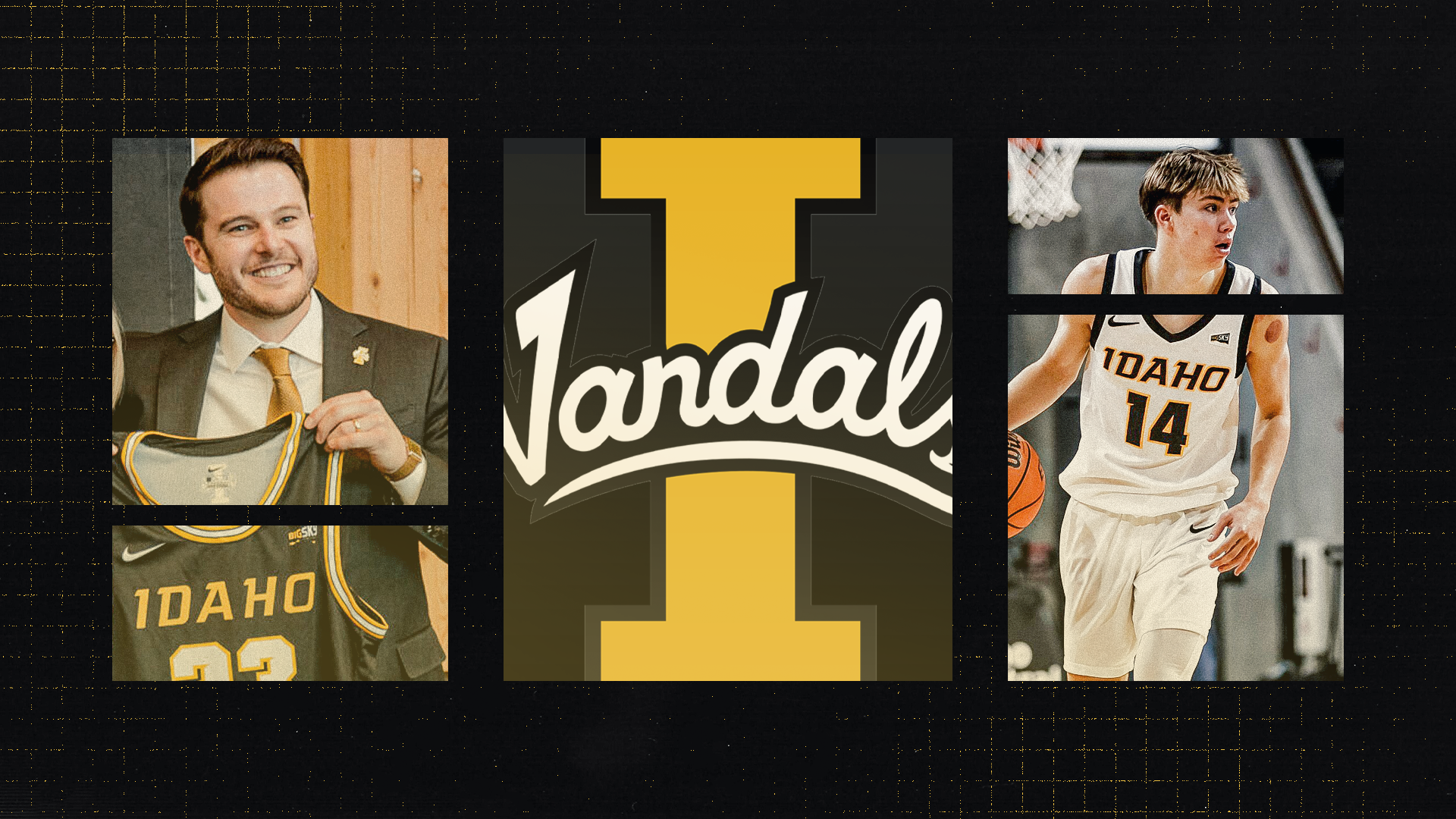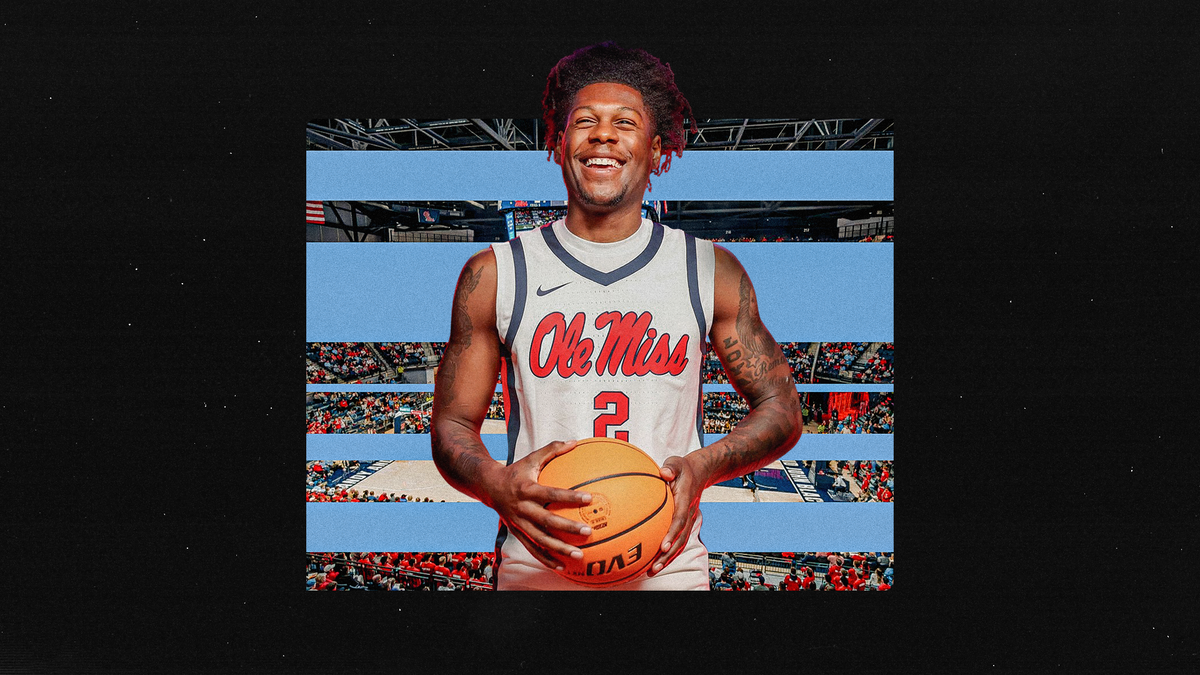With weeks to go until the start of the college basketball season, preview content is heating up. From now through Nov. 3, you (the college basketball consumer) will be fed oodles of articles, videos and reels destined to show you the true title contenders, the breakout players to watch and maybe even the team that will cut down the nets in early April.
It goes without saying that this oversaturation of media is not evenly distributed amongst the 365 Division I teams. Power conferences receive the lion’s share of coverage, with the higher-end mid-major leagues soaking up most of what’s left. Inevitably, a couple teams each season enter the national eye after serving as afterthoughts from November to February.
Enter CBB Underground: a series where I try to find those teams before they heat up. Each article will focus on a different program that I believe is much better than their amount of coverage shows, and I’ll try to convince you to at least keep this team on your peripheral as you monitor the sport this season. Amidst a busy college basketball landscape, these are the leaders of its underground scene.
Idaho Vandals
Overview
Hailing from the Big Sky, it’s been a while since casual college basketball fans have seen Idaho’s name pop up. The program has gone to the NCAA Tournament four times in its history, all between the years of 1981 and 1990. After five consecutive seasons in the basement of its conference, former Division II head coach and Seattle assistant Alex Pribble was brought on to lift the program back to respectability.
Pribble’s first season brought more of the same for Idaho fans, but there were noticeable strides taken in 2024-25. The program had its highest KenPom finish (281st) in seven years, and it finished sixth in the Big Sky with a conference tournament upset win over Portland State to boot.
With no players out of eligibility in the offseason, the talent exodus now prevalent in the low-to-mid-major ranks didn’t transpire in Moscow. Six Vandals did hit the portal, but only two (Tyler Mrus: 9.7 ppg, BYU and Julius Mims: 8.6 ppg, New Mexico State) were meaningful contributors to the team in the season prior. The other four 8+ point scorers stood firm with Pribble, to be joined by three transfers, three freshmen and a majority of last season’s supporting cast.
Pribble runs a modern offense predicated around the three-pointer. Idaho finished top-20 nationally with 48 percent of its shot attempts coming from behind the arc, and four different players averaged over four threes taken per game. To beat this team, you have to funnel their offense inside and attack them at the rim yourself when the ball’s in your hands. Defense has been an issue throughout Pribble’s tenure, and the unit sunk to a bottom-20 ranking nationally in AdjD last season. However, a couple of the team’s better defenders are returning and Pribble brought in a couple transfers (more on them later) who could raise the floor of the unit.
The ceiling of the Vandals is predicated on that defense. Does the high continuity mean that notable improvement can be made on a unit that allowed opponents to shoot 55 percent inside the arc last season? If you believe the answer is yes, then this team has all the tools to punch a ticket to The Big Dance.
Backcourt
The biggest strength of this team lies in its starting guard duo. Kolton Mitchell joined Pribble last season from in-state rival Idaho State, making the nine-hour drive (!) northwest after playing in a reserve role his freshman year. With Idaho’s three main guard options in 2023-24 gone, the redshirt was thrust into the starting point guard spot, and once conference play rolled around, the team needed at least 30 minutes out of him every night.
Mitchell answered the bell and then some, averaging over 11 points and three assists a night. As is the common theme with this Vandals squad, Mitchell was most effective from deep, specifically finishing with an eFG% of 57.4 from the three-point wings. At 6-foot-1, getting to the rim is less productive for the guard, but he fulfills his role of a facilitating deep threat well.
Complementing Mitchell will be Kristian Gonzalez, a junior who’s stayed in Moscow all three years. Despite averaging just .3 points more than Mitchell, Gonzalez is much more of a pure scorer, converting at an above-average level both from deep and in the paint. He’s reliable with the ball in his hands (11.7 TO%) and with more consistency, he can be one of the best scorers in the Big Sky.
A detail that I failed to mention with Mitchell and Gonzalez is their defense. Gonzalez likely would have gained an even greater lead on the Idaho scoring title if it wasn’t for his -3 defensive box plus-minus (DBPM). Mitchell was on the other side: he had a DBPM of -1.5 that’s below average nationally, but for the Vandals, that number was high enough to give him more minutes, not less.
This means that out of necessity, Titus Yearout and Isaiah Brickner will have to be involved in Pribble’s guard rotation. From a pure DBPM standpoint, these were Idaho’s best defensive guards last season, although even they (Yearout: -1.1, Brickner: -1.3) weren’t anything special. Brickner is more of a scoring threat – likely to play alongside Mitchell – while Yearout is more of a reliable second option.
Trevon Blassingame is a potential X-factor in the backcourt. After missing 2024-25 with an injury, the former Fairleigh Dickinson guard is back for his second full season with the Vandals. Playing 21 minutes a night, Blassingame had an okay offensive year in 2023-24 (4.1 ppg, 40.4 3PT% on 1.8 attempts), but his value proposition for Pribble lies in his -0.1 DBPM. If his scoring can get even slightly more efficient, he can lock up a sixth man/potential starting role in 2025-26.
The lone new face in the Idaho backcourt is Biko Johnson, a transfer from Division II Fort Lewis College. Albeit against lesser competition, Johnson comes in as the most efficient three-point shooter in the backcourt (35.4% on 5.7 attempts), and he’ll look to provide the main offensive spark for the Vandals off the bench.
Frontcourt
The frontcourt outlook for Idaho this season boils down to a “big four”, made up of three likely starters and a key backup piece.
At the 3, former Colorado State reserve Jack Payne is likely to start for Pribble. Like Mitchell, Payne came into Moscow last year after barely playing for his previous school, and he was thrown into playing the lion’s share of minutes at his position.
If Mitchell answered the bell, Payne ran up and rang it himself, as he was arguably the best player on Idaho in 2024-25. Standing out as a rim-and-three specialist, Payne finished averaging 10.8 points on a 55.4 eFG%. The lanky Boise native shot 34.7% from deep and converted at the rim at an impressive 68.7% clip.
Adding on to his impressive offensive resume, Payne is the defender to watch on this Vandals team. He has the best DBPM amongst returners (-0.5), and he ranked top 20 in the conference in both steal rate (2.6) and DREB% (16.0). Simply put, if Idaho makes any noise this season, Payne will be one of the main reasons why.
Tyler Linhardt will likely start at the 4 as a flawed-but-okay senior wing. Following the theme, this is year 3 for Linhardt in Moscow, and his first two seasons went pretty similarly: backup role, high usage, inefficient shooting, great at getting to the free throw line. There is some cause for concern now that more responsibility’s on Linhardt’s shoulders, especially since he graded out as one of the worst defenders on the team last season (-3.3 DBPM). If an opponent is looking to exploit a position on the floor against Idaho, Linhardt/the 4 is likely where they’ll attack.
The 5-spot for the Vandals this year belongs to their biggest transfer add (literally and figuratively), 6-foot-11 Brody Rowbury. The Southeastern Louisiana transfer spent three years battling in the Southland, a conference that was higher-rated than the Big Sky last season. Despite starting 81 games over three years with the Lions, Hammond, Louisiana is a hell of a culture shift from Meridian, Idaho, and the in-state product opted to head home.
At 6-foot-11, 255 pounds, Rowbury isn’t your typical old-fashioned bruising big. The senior does spend most of his time making plays in the paint, but he also steps outside of the area more often than you’d expect someone of his stature to. Nearly 40% of his two-point shots were considered “Far 2s” by Torvik last season, and he even made seven threes.
Rowbury finished with a 123.0 offensive rating last season, good for fifth in the Southland. If it still needs to be said, the big brings many talents: efficient shooting (54.3 eFG%), glass-cleaning capabilities (9.3 OREB%), ball security (12.7 TO%), a propensity for getting to the line (66.3 FT rate). He’s a solid defender as well, coming in with a -0.5 DBPM that ties with Payne for tops on the team.
With last year’s starting 4 and 5 gone, the Vandals need a difference-maker in the front court this season. Pribble’s betting that Rowbury is that guy, and after he spent his junior season making major improvements in a better conference, don’t be surprised if the transfer takes his game to a whole new level in Moscow.
Seth Joba is the last player I’ll get to here, as the Vermont transfer will get called upon to spell Linhardt and Rowbury in certain moments. The junior didn’t get much run over two seasons in Burlington, and in the minutes he did play, he was near-disastrous on offense (-6.4 career OBPM). However, on defense and on the glass, Joba held his own, meaning he should still provide value to an Idaho team that sorely needs interior defenders.



